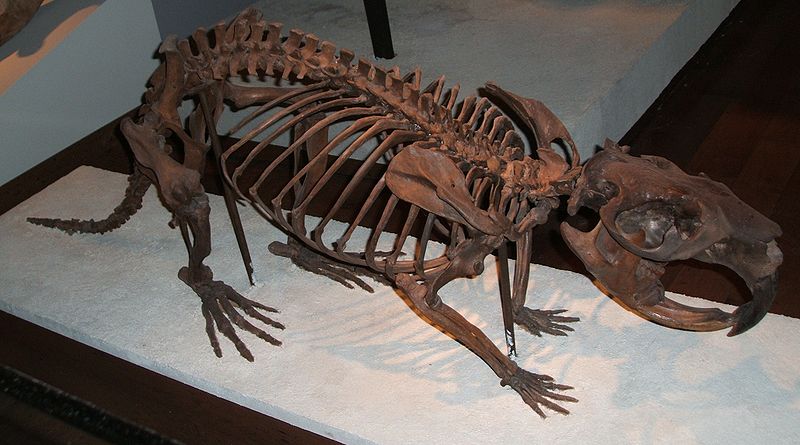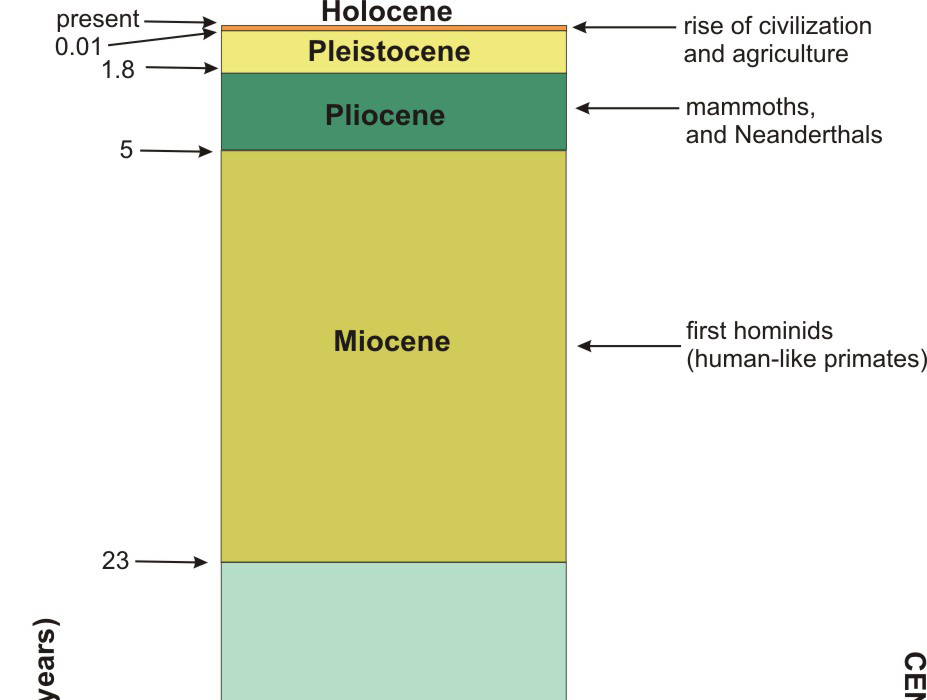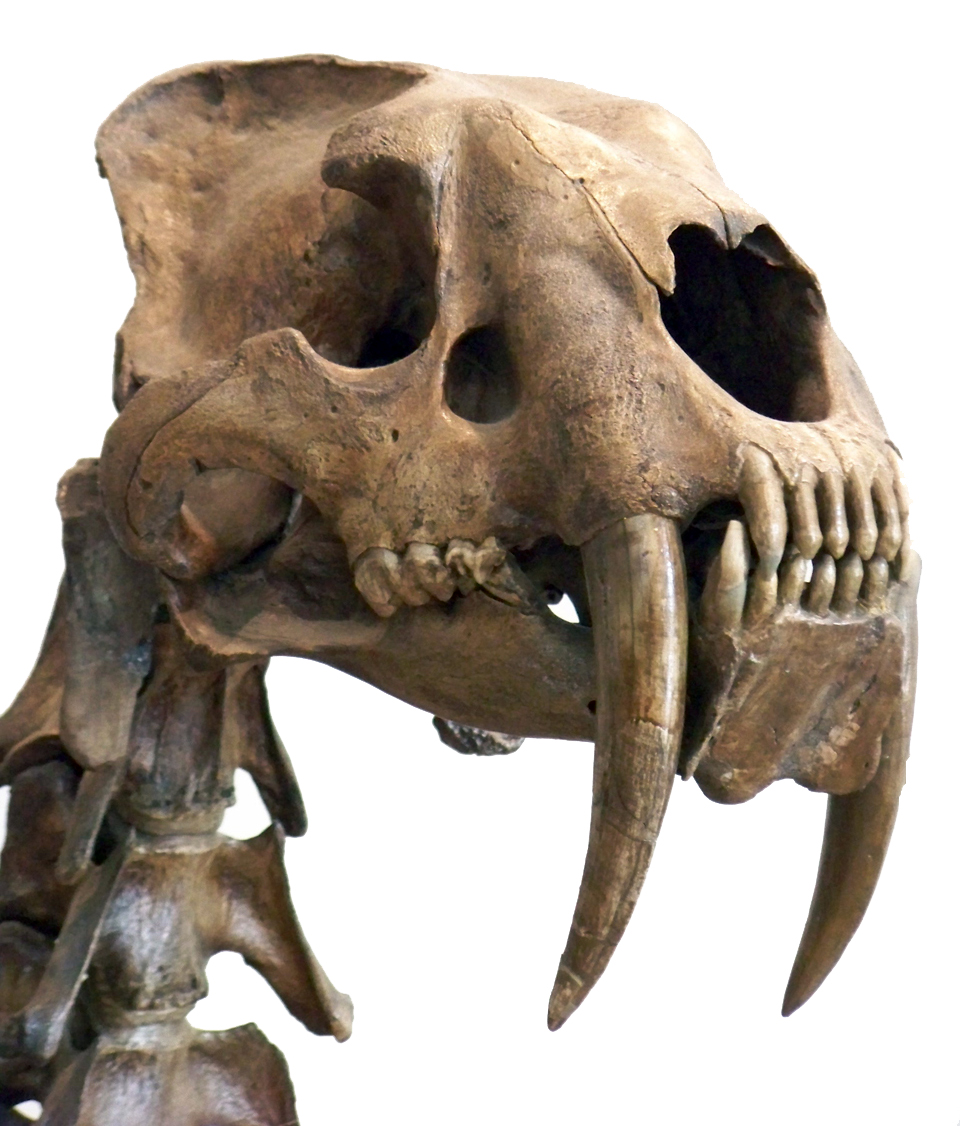Life in the Cenozoic Era
The Cenozoic Era began 65.5 million years ago and continues to the present. The Cenozoic Era, like other eras, is further subdivided into smaller periods. The Cenozoic Era is split into two periods known as the Tertiary Period (65.5 – 1.8 million years ago) and the Quarternary Period (1.8 million years ago to present time). The wealth of fossil data for this era, however, allows palaeontologists to further subdivide these two periods into even smaller subunits of time called epochs such as Paleocene, Eocene, Oligocene, Miocene and Holocene (present day).
Similar to eras and periods, epochs are also characterized by changes in life-forms. Epochs, however, can have life-form differences that vary from continent to continent, and are not necessarily the same worldwide.
Mammals began to diversify and eventually became the dominant life-form during the Cenozoic Era. Mammals branched into a wide variety of land, marine, and air organisms. The separation of continents allowed originally similar species to evolve separately. In Australia, for example, mammals like kangaroos and koalas, with unique characteristics like carrying their young in a pouch, evolved over time. Many large but now extinct mammals like mammoths and saber-toothed cats also evolved during the Cenozoic Era.
Several major ice ages also occurred during the Cenozoic Era. The end of the last ice age, about 10,000 years ago, marked the start of the Holocene Epoch. The Holocene Epoch, which continues to the present, marked the emergence of humans as the dominant life-form on the Earth.
Cenozoic Tectonics
A giant beaver named Castoroides ohioensis lived in much of North America during the Pleistocene Epoch. It was up to 2.5 meters (about 8 feet) long, making it about the size of a black bear. The Castoroides ohioensis had teeth that were up to 15 centimeters (about 8 inches) long.
 The giant beaver became extinct after the end of the last ice age, about 10,000 years ago.
The giant beaver became extinct after the end of the last ice age, about 10,000 years ago.
Many of the Earth’s prominent mountain ranges, including the Alps in Europe and the Andes in South America, were formed during the Cenozoic Era. The Himalayas in Asia, for example, the world’s highest mountain range, were formed approximately 55–45 million years ago when India collided with the Asian continent.
The Atlantic slowly widened during the Cenozoic Era. North and South America eventually became attached. All other continents also continued to move during the Cenozoic Era until they eventually drifted to their current positions on the Earth.


